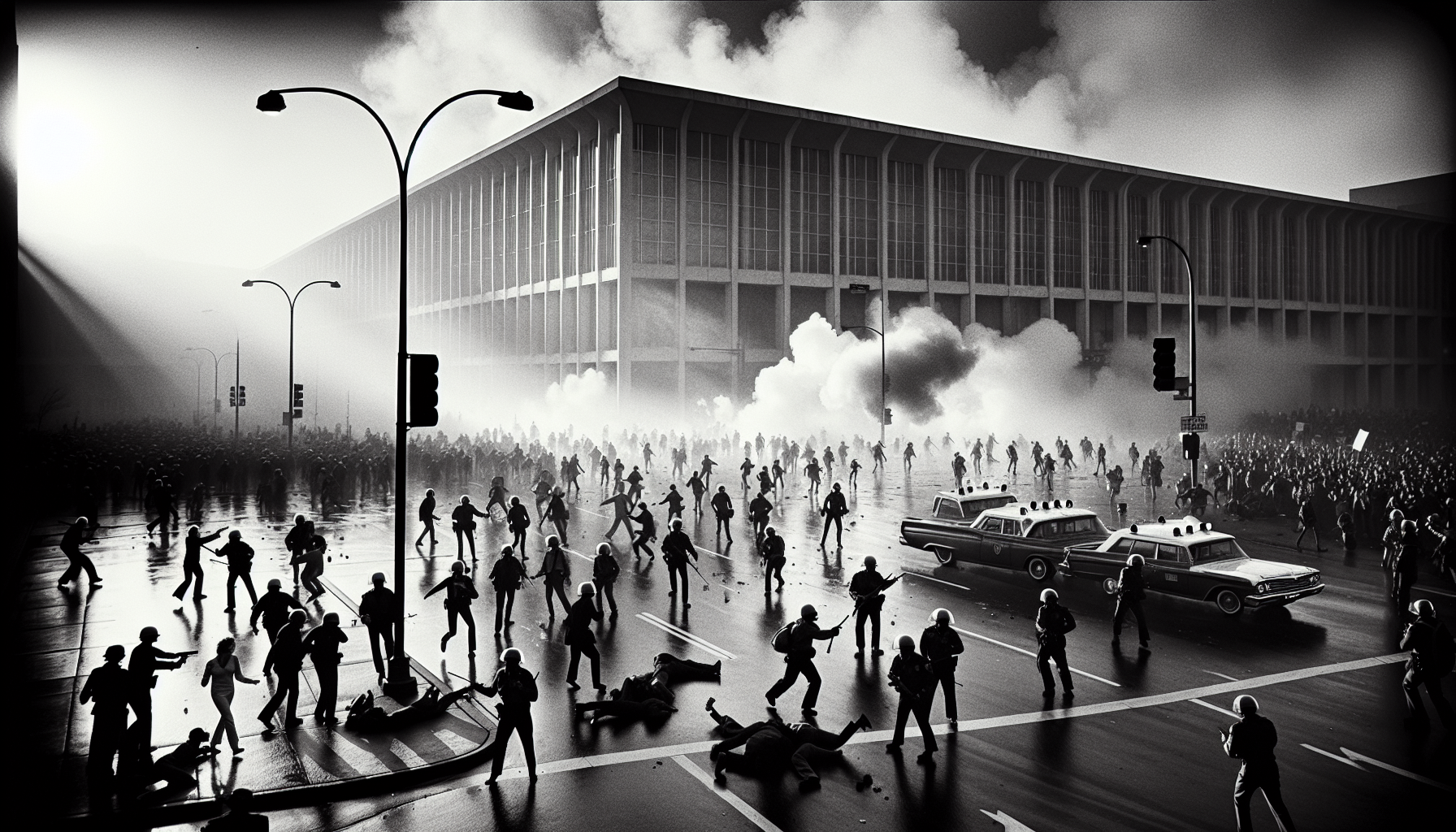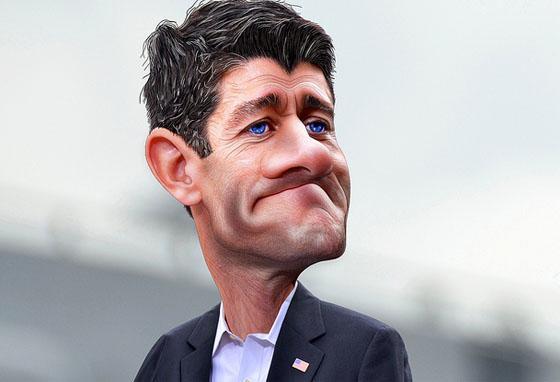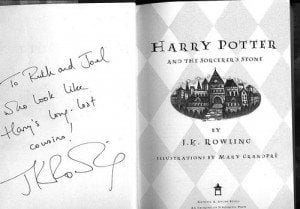
The 1968 Democratic National Convention in Chicago stands as one of the most tumultuous events in American political history. As the nation grappled with the Vietnam War and civil unrest, the convention became a flashpoint for social and political tensions. The chaos that unfolded both inside and outside the convention hall had a profound impact on the Democratic Party and the course of the 1968 presidential election.
This article delves into the events surrounding the Chicago DNC, examining the political climate leading up to the convention, the proceedings within the convention hall, and the protests that erupted on the streets. It explores the clash between demonstrators and law enforcement, which resulted in violent confrontations that shocked the nation. By analysing these events, we aim to shed light on a pivotal moment in American history and its lasting consequences for politics and society.
The Political Climate Leading up to the Convention
The months leading up to the 1968 Democratic National Convention in Chicago were marked by unprecedented turmoil and social upheaval. The United States found itself grappling with a series of crises that would shape the political landscape for years to come.
Vietnam War and Anti-War Movement
The Vietnam War had become an increasingly divisive issue by 1968. President Lyndon B. Johnson had significantly escalated the U.S. military commitment to South Vietnam, expanding troop numbers and doubling monthly quotas for the U.S. Army draught. By 1968, over half a million Americans were serving in Vietnam, and U.S. warplanes were relentlessly bombing targets on both sides of the “demilitarised zone”.
The Tet Offensive, launched by Communist forces in early 1968, dealt a severe blow to public confidence in the war effort. Respected journalists, such as CBS legend Walter Cronkite, began to describe the conflict as a quagmire. As a result, LBJ’s approval ratings briefly fell below 40% in 1967 for the first time. Campus protests grew in size and media attention, and for much of the country, the war became the overriding issue.
The anti-war movement gained significant momentum in the lead-up to the convention. Groups like the National Mobilisation Committee to End the War in Vietnam (MOBE) and the Youth International Party (Yippies) planned massive demonstrations to coincide with the Democratic National Convention. These organisations aimed to draw attention to their cause and pressure the Democratic Party to adopt an anti-war stance.
LBJ’s Decision Not to Seek Re-election
The growing unpopularity of the Vietnam War had a profound impact on President Johnson’s political future. Despite winning the New Hampshire primary, LBJ faced a strong challenge from anti-war senator Eugene McCarthy, who secured 42% of the vote. This unexpected result, coupled with Robert F. Kennedy’s entry into the race, put immense pressure on Johnson.
On March 31, 1968, in a televised address to the nation, President Johnson stunned the country by announcing that he would not seek or accept the nomination for another term. This decision played well initially, with LBJ being hailed as a statesman and his approval ratings briefly rising above 50%. However, it also created a power vacuum within the Democratic Party, leading to a contentious nomination process.
Assassination of Martin Luther King Jr. and Robert F. Kennedy
The political climate took an even darker turn with two shocking assassinations in quick succession. On April 4, 1968, civil rights leader Martin Luther King Jr. was assassinated in Memphis, Tennessee. This tragic event sparked riots in over 100 cities across the country, including the nation’s capital. The violence against leaders contributed to a general sense that the country was in disarray, with 57% of Americans agreeing that “our political process has fallen apart when candidates can’t campaign without fear of assassination”.
Just two months later, on June 5, Senator Robert F. Kennedy was shot after winning the California primary. He died the next day. The proximity of these two assassinations raised the emotional intensity to unprecedented levels and had a profound impact on the civil rights movement and the Democratic Party.
The deaths of King and Kennedy caused a drastic shift in the civil rights movement. Many activists who had aligned themselves with both leaders felt devastated and disillusioned. John Lewis, a prominent civil rights figure, saw Kennedy as the man to carry out the civil rights revolution. The assassinations led to further radicalization within the movement, with some groups, like the Black Panther Party, adopting more militant approaches.
These tragic events, combined with the ongoing Vietnam War and social unrest, created a volatile political climate as the Democratic National Convention approached. The party found itself deeply divided, struggling to present a united front in the face of these immense challenges. The stage was set for what would become one of the most tumultuous and consequential political conventions in American history.
Inside the Convention Hall
The 1968 Democratic National Convention, held in Chicago from August 26 to August 29, was one of the most tumultuous political gatherings in American history. The International Amphitheatre, where the convention took place, was surrounded by barbed wire and guarded by 11,000 Chicago police officers working twelve-hour shifts. This heightened security reflected the tense atmosphere both inside and outside the convention hall.
Delegate Selection Controversies
The process of selecting delegates for the convention was a source of significant controversy. Many activists and reformers pushed for more inclusive and democratic procedures, leading to heated debates over the party’s platform. This controversy highlighted the growing divide within the Democratic Party between the moderate establishment wing and the more liberal, anti-war faction.
The contentious nature of the delegate selection process was further exacerbated by the fact that the frontrunner, Vice President Hubert Humphrey, had not won any primary elections. This sparked outrage among many delegates and protesters, who felt that the party’s establishment was ignoring the will of the people.
Platform Debates
The platform debates at the convention were particularly intense, with the anti-war faction pushing for a more progressive stance that called for an immediate withdrawal from Vietnam. These debates reflected the deep divisions within the party over the Vietnam War and other key issues.
Humphrey, faced with a divided party, attempted to craft a platform that would appeal to both factions. He proposed a plank calling for a bombing pause that “took into account, most importantly, the risk to American troops as well as the response from Hanoi”. However, this compromise was met with resistance from both sides.
President Johnson, despite not attending the convention, maintained tight control over the proceedings. He angrily rejected Humphrey’s compromise peace plank as a personal affront, demanding that Humphrey change it immediately. The platform that Humphrey eventually introduced, written under Johnson’s dictation, prompted a passionate three-hour debate on the convention floor.
The debate over the peace plank was particularly contentious. Anti-war Democrats were unrelenting in their objections, but ultimately, the delegates defeated the peace plank by a vote of 1,567¾ to 1,041¼. Many perceived this defeat as the result of behind-the-scenes influence from Johnson and Chicago Mayor Richard J. Daley.
Nomination Process
The nomination process itself was a source of significant controversy. Humphrey, who had not entered any of the thirteen state primary elections, emerged as the frontrunner. This sparked outrage among many delegates and protesters, who felt that the party’s establishment was ignoring the will of the people expressed through the primary process.
The convention’s proceedings were marked by intense debates and emotional outbursts. When Humphrey’s victory was announced shortly after midnight, many delegates shouted, “No! No!” in protest. This reaction underscored the deep divisions within the party and the growing influence of the anti-war movement.
Throughout the convention, the Democratic Party struggled to present a united front in the face of immense challenges. The platform that was ultimately adopted affirmed the party’s “inherited duty to serve the people and their government” and called for “orderly progress” in the face of change. However, these lofty ideals stood in stark contrast to the chaos unfolding both inside and outside the convention hall.
The 1968 Democratic National Convention proved to be a watershed moment in the history of the Democratic Party. It highlighted the deep divisions within the party and the growing influence of the anti-war movement. The contentious debates, controversial nomination process, and violent clashes outside the convention hall became iconic symbols of the era, contributing to the growing sense of social and political upheaval in the late 1960s.
Protests and Police Response
The Mobilisation Committee and Yippies
The 1968 Democratic National Convention in Chicago became a focal point for anti-war protests, drawing thousands of demonstrators to the city. The National Mobilisation Committee to End the War in Vietnam (MOBE) and the Youth International Party (Yippies) were among the primary organisers of these protests . These groups applied for permits to camp at Lincoln Park and hold rallies at various locations, including the International Amphitheatre, Soldier Field, and Grant Park.
Mayor Richard Daley, determined to maintain control, approved only one permit for a protest at the Grant Park bandshell. Despite this restriction, thousands of protesters, many from out-of-state and middle-class backgrounds, set up camp at Lincoln Park about a week before the convention . Anticipating resistance, protest leaders organised self-defence training sessions, including karate and snake dancing.
Clashes in Grant Park and Michigan Avenue
Tensions between protesters and police escalated quickly. On Sunday, August 25, police forcibly removed protesters from Lincoln Park after the 11 p.m. curfew, using tear gas and clubs. The following days saw increasing confrontations between law enforcement and demonstrators.
On Wednesday, August 28, a significant clash occurred at Grant Park. Around 3 p.m., a young man climbed the flagpole at the Grant Park bandshell and lowered the American flag, replacing it with a red flag. This action prompted a swift and violent response from the police. As officers moved to arrest the man, protesters surrounded them, leading to a chaotic scene. Tear gas was deployed, though accounts differ on whether it was first thrown by protesters or police.
Later that evening, an estimated 5,000 protesters gathered outside the Conrad Hilton Hotel on Michigan Avenue, which served as the Democratic Party’s headquarters. The intersection of Michigan Avenue and Balbo Drive became a flashpoint for confrontation. Police attempted to disperse the crowd, making charges into Grant Park and then back towards the hotel. Some convention attendees, watching from hotel windows, reported that protesters were trapped between two groups of officers.
The ‘Police Riot’
The events of August 28 culminated in what would later be described as a ‘police riot’ by an official investigation. The police response to the protests was characterised by excessive force and indiscriminate violence. Officers beat protesters with billy clubs, made numerous arrests, and used tear gas extensively. The next day’s newspaper described Michigan Avenue as ‘a bloody battleground’.
The violence was not limited to active protesters. Eyewitnesses reported that police attacked bystanders, including women, the elderly, and journalists. The Walker Report, an official investigation into the events, concluded that the police had ‘lost all control’ and that their actions amounted to a ‘police riot’.
The scale of the police response was substantial. More than 11,900 Chicago police officers were on duty, working 12-hour shifts. They were supported by 5,649 Illinois National Guardsmen, with an additional 5,000 on alert. The city also requested assistance from up to 1,000 FBI officers and military intelligence officers.
The aftermath of the convention saw over 660 arrests, mostly of young men with no criminal record. A significant number of protesters were injured, as were some police officers, primarily from thrown objects. Despite the chaos, no fatalities were reported, and police did not discharge firearms.
The events at the 1968 Democratic National Convention in Chicago had a profound impact on American politics and society. The violent clashes between protesters and police, broadcast live on television, shocked the nation and highlighted the deep divisions within the country over the Vietnam War and civil rights.
Conclusion
The 1968 Democratic National Convention in Chicago was a pivotal moment in American history, highlighting the deep divisions within the country and the Democratic Party. The chaos that unfolded both inside and outside the convention hall had a significant impact on the political landscape. The violent clashes between protesters and police, broadcast live on television, shocked the nation and brought the anti-war movement to the forefront of public consciousness.
The events in Chicago had far-reaching consequences for American politics and society. They contributed to the fracturing of the Democratic Party and played a role in Richard Nixon’s victory in the 1968 presidential election. The convention also led to changes in the party’s nominating process, aiming to make it more democratic and representative. In the end, the 1968 Chicago DNC stands as a stark reminder of a tumultuous era in American history and its lasting influence on the country’s political and social fabric.
SEE ALSO: Chicago Democratic Convention: Democrats Unite to Crown Their Savior















